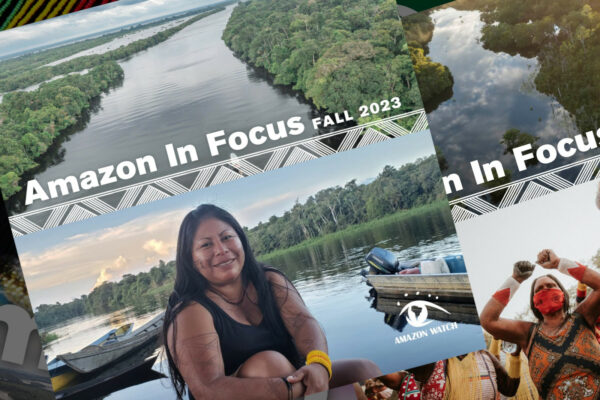The combined impacts of deforestation and climate change will bring a host of new troubles for the world’s tropical rainforests argues a new study in Trends in Ecology and Evolution. Drying rainforests due to climate change could lead to previously inaccessible forests falling to loggers, burning in unprecedented fires, or being overexploited by hunters.
“Not all tropical forests are going to dry out and warm up, but for those that do, we need to worry about more frequent and intense human-caused fires, as well as increasing accessibility to loggers and hunters,” lead author Jedediah Brodie with the University of Montana told mongabay.com.
Researchers call such impacts “synergistic,” because the combined effects of climate change and deforestation may be more severe than each considered in isolation. On the one hand, climate change is likely to open up new forests for exploitation, while on-going deforestation makes forests less resilient to climate impacts.
“Viewing climate change and tropical deforestation as unrelated issues will prevent us from addressing either one as efficiently as if we were to also consider the interactions between them,” Brodie says.
A rise of fires in tropical forests is of special concern, since many rainforest species are not adapted to fire. In healthy, intact rainforests, non-human started fires are incredibly rare. But climate change-exacerbated droughts is likely to bring more fire incidents.
“We need a massive campaign on fire education, awareness, and control all across the tropics,” notes Brodie.
The synergistic impacts of deforestation and climate change will also create a feedback loop, since the destruction and degradation of rainforest emits significant amounts of carbon, intensifying climate change.
“Having fewer trees also means less evapotranspiration and a decline in cloud cover, which could further exacerbate global warming because clouds are important for reflecting solar heat back into space,” Brodie adds, noting that, “It is also vital to immediately halt the destruction of tropical peat forests, since this can release huge amounts of carbon to the atmosphere.”
Brodie says the forests of Southeast Asia are currently most vulnerable to these impacts since “Southeast Asia has among the highest deforestation rates in the world, and several countries there are doing very little to reduce these rates.”
But no tropical forest is immune. Even the Amazon rainforest, the largest in the world, has seen two extreme droughts in the last decade alone. Scientists have long warned that the combination of drought and on-going deforestation in the Amazon could flip nearly half of the ecosystem from rainforest to savannah.
How do we protect rainforests in an age of climate change and on-going deforestation? Aside from cutting greenhouse gas emissions quickly, the study recommends that tropical nations coordinate with one another to create new protected areas and expand existing ones, focusing on areas vulnerable to climate and deforestation impacts. The nascent REDD program (Reducing Emissions from Deforestation and forest Degradation) should be crafted with an eye toward protecting vulnerable species, expanding protected areas, creating corridors between forests, and mitigating expanding agriculture in rainforests. In addition, governments worldwide should drop policies that support the destruction of rainforests.
“We need to convince governments to stop agricultural subsidies that indirectly promote tropical deforestation – such as ethanol subsidies in the US. We also need to ensure that further expansion of agriculture in the tropics is limited to degraded areas, and that intact forests remain (or become) connected into regional-scale protected networks,” Brodie says.
Already global average temperatures are 0.8 degrees Celsius (1.44 degrees Fahrenheit) higher than the Industrial Revolution. Depending on how quickly society acts to curb climate change, temperatures are expected to rise another 1.1 degrees Celsius (2 degrees Fahrenheit) – under the best case scenario – or up to 6.4 degrees Celsius (11.5 degrees Fahrenheit) – worst case – by the end of this century.













